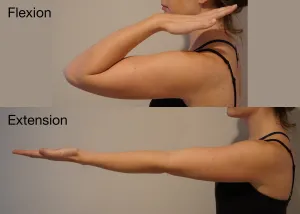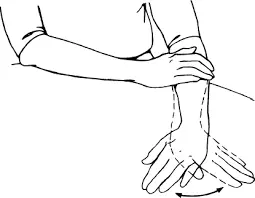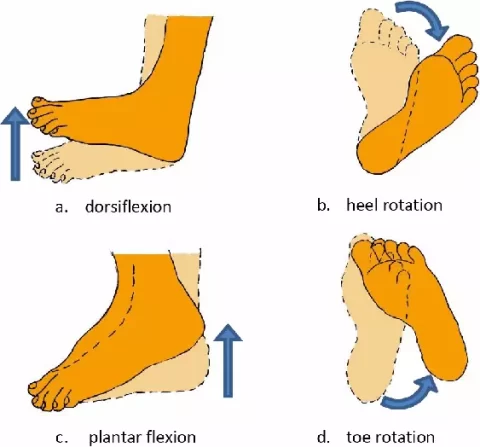Shoulder Internal Rotation
What is Shoulder Internal Rotation?
Shoulder internal rotation is an activity of the shoulder joint that leads the arm to spin inward and toward the body’s center. This movement rotates the humerus (humerus) in the shoulder. Shoulder internal rotation is a movement of the arm or upper arm joint that causes the humerus (humerus) to rotate inward or medially toward the body’s midline. Rotating the humerus at the shoulder moves the arm and forearm closer to the body’s center.
Shoulder internal rotation is a necessary action in many daily tasks and sports. This enables you to reach behind you, put on a shirt, throw a ball, and execute other actions that require rotating your arm inward. Maintaining optimal internal rotator muscle strength and flexibility is essential for proper shoulder function and preventing imbalance or injury.
To ensure good shoulder function and stability, internal and external rotation must be balanced. An imbalance between internal and exterior rotation might result in shoulder discomfort or injury. To maintain optimal shoulder health, it is critical to maintain strength and flexibility in both internal and external rotation.
Shoulder Internal Rotator Muscles
The internal rotators of the shoulder muscles are a set of muscles that allow the shoulder joint to rotate internally. The primary muscle groups involved in shoulder internal rotation are:
Subscapularis: This muscle is found on the front (front) of the scapula. It is the strong internal rotator of the shoulder and is responsible for starting and carrying out motions.
Pectoralis major: The pectoralis major is a large muscle located in the upper chest. Although its major function is shoulder adduction (holding the arm in the midline of the body), it also helps with internal rotation.
Latissimus dorsi: The latissimus dorsi is a wide muscle that goes down and joins with the upper arm bone. It facilitates many actions, including shoulder extension, adduction, and internal rotation.
Teres major: A small muscle placed behind the upper arm. It unites with the latissimus dorsi to aid with internal rotation and adduction of the shoulders. The anterior deltoid is primarily a shoulder flexor and abductor, but it also assists with internal rotation when the arm is in a specific posture.
These muscles, together with the other shoulder muscles, unite to create coordinated motions and support the shoulder joint during internal rotation. Proper balance and strength between the internal and external rotators are essential for maintaining shoulder stability and avoiding imbalance or injury.
Shoulder Internal Rotation ROM
Shoulder internal rotation range of motion varies from person to person and is influenced by factors such as flexibility, joint health, and past injuries. Degrees of rotation are commonly used to quantify the range of motion.
A healthy individual’s range of motion for internal shoulder rotation is 70 to 90 degrees. This indicates that the arm can rotate inward towards the body’s midline to some extent. However, it should be noted that the range of motion might vary according to age, gender, and individual characteristics. Certain variables, such as stress or muscular imbalances, might limit the shoulder’s range of internal rotation. Rotator cuff tears and sticky capsules (frozen shoulder) are two examples of injuries that might impair motion.
A healthcare practitioner or physical therapist may utilize goniometry, a tool for measuring joint angles, to determine the amount of shoulder internal rotation. They normally ask you to lie on your back with your shoulder in a neutral position and measure the degree of rotation while internally rotating the arm.
Assume you have restrictions in the internal rotation of your shoulder or are concerned about its movement. In that scenario, you should consult a doctor, such as a physical therapist, who can assess your condition and give suitable advice and treatment.
Benefits Of Shoulder Internal Rotation
- Strengthening the rotator cuff: The supraspinatus muscle, one of four rotator cuff muscles, is used during internal rotation. Rotator cuff strengthening can reduce the chance of injury while also improving athletic performance.
- Increased range of motion: Internal rotation of the shoulder joint can assist in increasing its range of motion.
- Pain Relief: Internal rotation of the shoulder might assist in alleviating discomfort over time.
- To avoid stiffness: Shoulder internal rotation can assist keep the posterior region of the shoulder joint flexible.
Special Test For Shoulder Internal Rotation
If you wish to do a particular internal rotation test on the shoulder, utilize the “Hornblower Test” or the “Lift Test.” These tests assist in measuring the range of motion and integrity of the subscapularis muscle, which is responsible for the shoulder joint’s internal rotation. Complete each test as shown here.
Hornblower Test
Ask the patient to sit or stand with one arm at the side, elbow bent at a 90-degree angle, and forearm pointing forward. Instruct the patient to internally turn their shoulder while lifting their arm behind them to the ceiling. Examine the patient’s ability to fully internally rotate the shoulder joint and record any discomfort, weakness, or restriction of motion. Compare the findings to the opposing shoulder.
Lift Test
Ask the patient to place the back of their hand on the small of their back, with their elbow at a 90° angle. Instruct the patient to raise their arms off the back while maintaining touch with the back. Examine the patient’s ability to lift his arms behind his back and record any discomfort, weakness, or restriction of mobility.
Compare the findings to the opposing shoulder. Both tests focus on the function of the scapulae muscle, an essential internal rotator of the shoulder joint. A positive test result (pain, weakness, or limited range of motion) might suggest scapular injury or pathology.
Shoulder Internal rotation Stretching
Sleeping stretch:
Lie on your side, injured shoulder on top. Fold your elbow 90 degrees and place it on a cloth or pillow. To extend the internal rotation, use the opposite hand to gently push down on the back of the forearm.
Doorway Stretch:
Position your forearm at a 90-degree angle against the door frame. Take a step forward until your leg is on the same side as your extended arm. You should notice a stretch over your front shoulder.
Cross-body stretch:
Raise your arm away from your injured shoulder and towards your chest. Bring your other hand up to your chest until you feel a stretch over the back of your shoulder.
Exercise For Shoulder Internal rotation
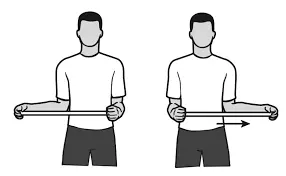
Shoulder Internal Rotation Wand Exercise
Starting in a standing stance, hold your wand with both arms parallel to the ground and palms down on both sides. Allow your injured arm to handle the majority of the heavy lifting, and raise the wand. You should keep your damaged arm relaxed. Repeat eight repetitions and 10 seconds hold.
Strengthening Shoulder Internal Rotation Exercises
Shoulder Internal rotation with weight
Sit in a chair. Roll a towel and place it between your elbows and sides. Bend your elbow to 90°. Use your elbow to gently compress the towel and keep it from falling out. Hold the weight with your thumb up. Gradually transfer the weight over your chest. Come to a stop when your hand touches the opposing arm. Maintain this posture for as many seconds as directed. Slowly return to your starting location.
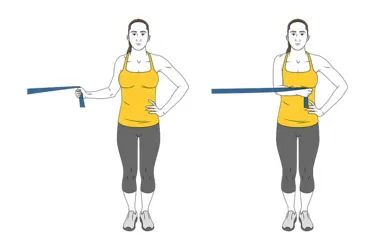
Shoulder internal rotation With Theraband
Attach one end of the training band to a sturdy object. Take a seat. Put a cloth folded up between your elbow and your side. Bend your elbow at a 90° angle. To stop the towel from slipping out, gently compress it with your elbow. Slowly stretch the band around your chest. When your hand reaches the other arm, come to a stop. Hold this posture for the duration specified. Return slowly to your starting position.
Internal Cable Shoulder Rotation
Place your left side toward the cable machine. Make sure the cable handle is adjusted to the height of your lower chest. Hold the handle with your left hand. Stand tall, chest high, core braced.
Begin the action by moving your left hand across your body. Your left upper arm should stay in position and close to your side.
Once the handle has gone across your body, pause and then gently return to the beginning position.
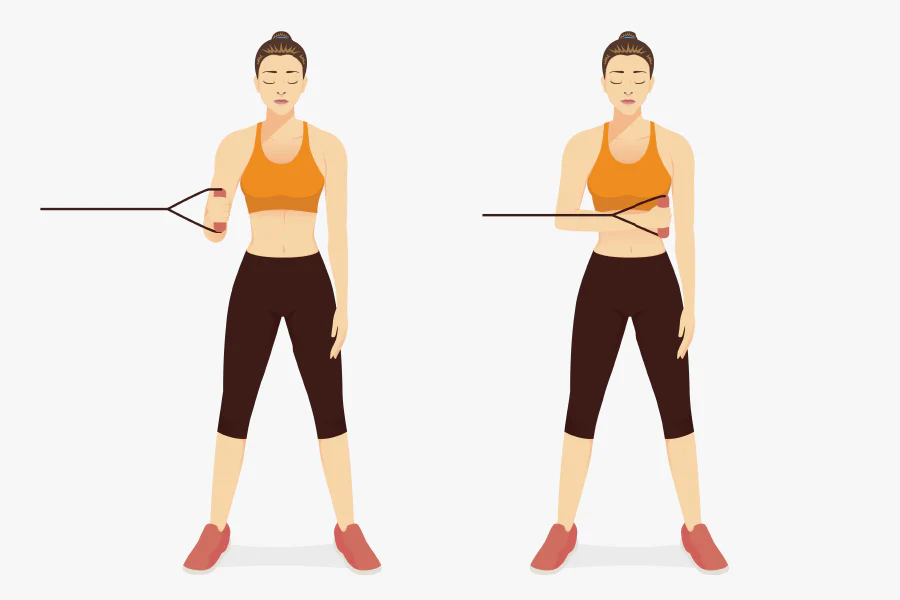
Manual Muscle Testing: Shoulder Internal Rotation
Grading
Grade – 5 (normal): Reach the limit of the range and apply as much resistance as possible.
Grade-4 (good): A whole range is achievable but requires a high level of resistance.
Grade: 3 (fair): Complete range of motion does not involve physical resistance.
Grade 2 (Poor): A whole partial range of motion is offered.
Grade 1 (Trace): There is a perceptible flicker of contraction caused by osteokinematic activity, muscle contraction, or tendon contraction.
Grade 0: There is no tendon, muscle, or osteokinematic activity.
Grade: 5 (normal). Grade: 4 (Good). Grade: 3 (Fair).
Patient Position
Prone position with shoulder abducted to 90°, a folded towel beneath the distal arm, and forearm dangling vertically from the bed edge.
Therapist Position
Stand on the test side. For resistance, place one hand on the volar side of the forearm, just above the wrist, while the other hand exerts counterforce at the elbow. The resistance hand applies resistance in both the downward and forward directions. The counterforce is directed both backward and upwards.
Instructions to the Patient
Move your forearm up and back while holding it. Do not let me pull it down!
Grade – 5 (normal): Reach the limit of the range and apply as much resistance as possible.
Grade-4 (good): A whole range is achievable, but it requires a high level of resistance.
Grade: 3 (fair): Complete range of motion does not involve physical resistance.
Grade: 2 (poor). Grade: 1 (Trace). Grade: zero.
Patient Position
Prone posture, head inclined to the test side, shoulder abducted to 90°, forearm hangs vertically from the bed’s edge. The palm is facing the table, and the arm is neutral.
Therapist Position
Standing on the test side or sitting on a low stool. The hand used for palpation must recognize the subscapularis tendon deep within the axilla. The test arm might need to be supported at the shoulders by the therapist.
Instructions to the Patient
Rotate your arm so that your palm faces away from the table.
Grade 2 (Poor): A whole partial range of motion is offered.
Grade 1 (Trace): There is a perceptible flicker of contraction caused by osteokinematic activity, muscle contraction, or tendon contraction.
Grade 0: There is no tendon, muscle, or osteokinematic activity.
FAQs
Which muscles perform shoulder internal rotation?
The muscles in concern include the subscapularis, pectoralis major, latissimus dorsi, teres major, and anterior deltoid.
What are the advantages of internally rotating the shoulders?
It helps to strengthen the rotator cuff, promote shoulder joint stability, and improve range of motion. Injury prevention is a major advantage when performed regularly and with proper technique.
What causes a lack of internal shoulder rotation?
The posteroinferior section of the glenohumeral joint capsule contracts and thickens as a result of the repeated microtrauma caused by the throwing motion’s deceleration.
What activities require shoulder internal rotation?
Internal rotation is necessary for a variety of daily living functions, most notably bathing, toileting, and dressing.
What are the benefits of shoulder rotation?
Increase mobility, flexibility, and strength while also supporting upper-body health.
references
- Patel, D. (2023c, June 29). Shoulder Internal & External Rotation – Samarpan Physiotherapy Clinic. Samarpan Physiotherapy Clinic. https://samarpanphysioclinic.com/shoulder-internal-external-rotation/
- Internal Cable Shoulder Rotation – WorkoutLabs Exercise Guide. (n.d.). WorkoutLabs. https://workoutlabs.com/exercise-guide/internal-cable-shoulder-rotation/



